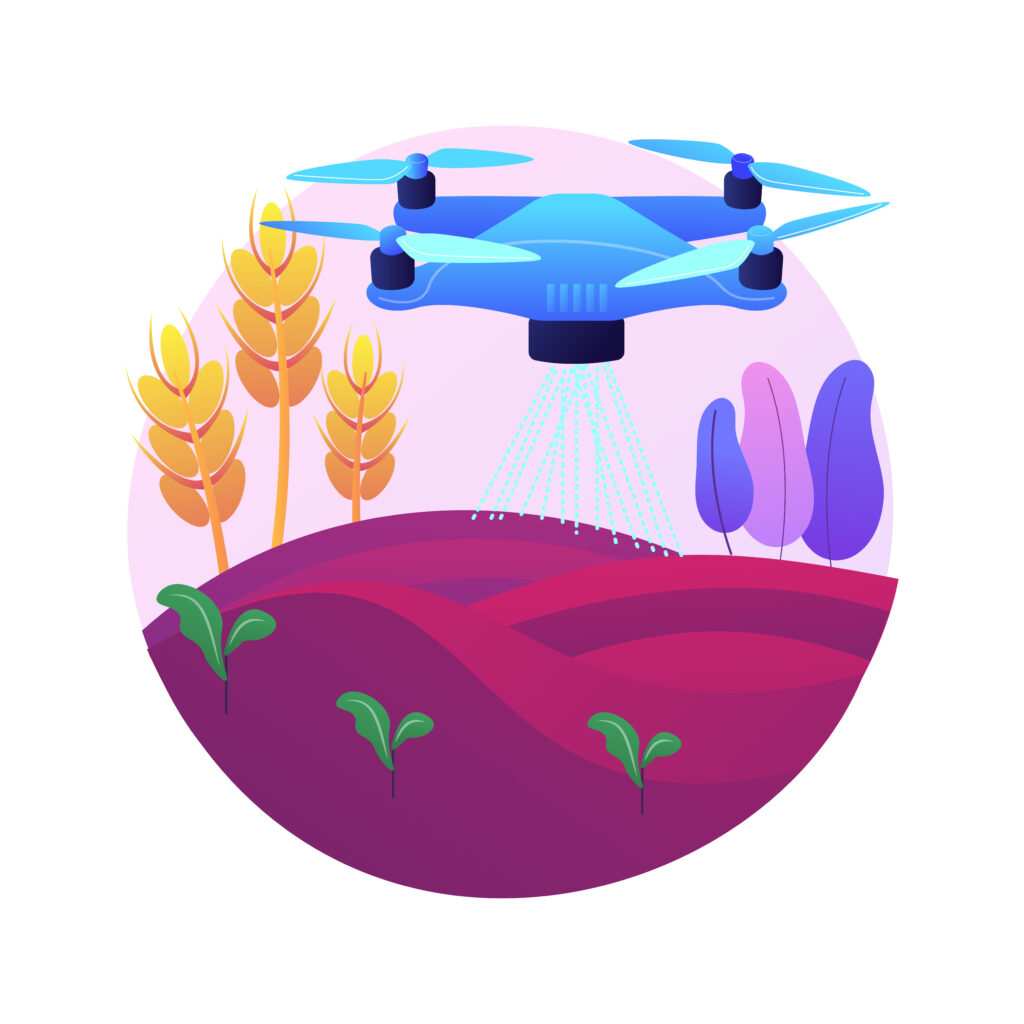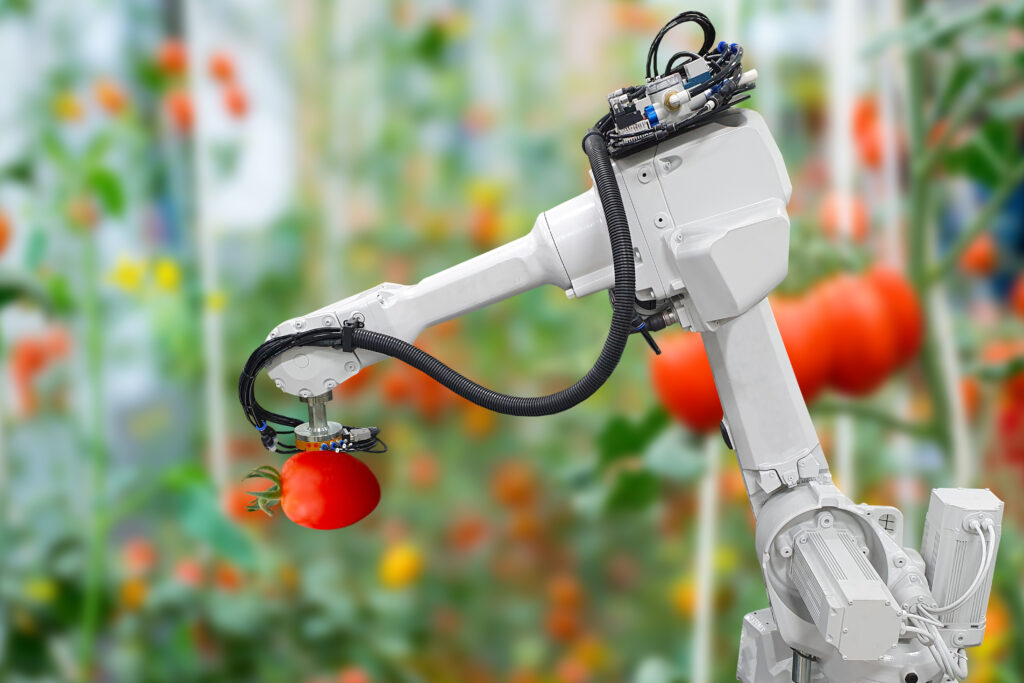After years, robotics has entered agriculture to make a fundamental difference in this field. Agricultural robots are specially designed to assist farmers in a wide range of tasks. In this article, we are to provide you with comprehensive information about robots and their significant role in agriculture.

Robotics in agriculture
Agriculture is becoming a high-tech industry and is given a great deal of attention these days. As technology is developing rapidly, farmers are increasingly becoming interested in using robots to increase yield production. Agricultural robots are designed to ease the burden on farmers by doing laborious tasks. In other words, they perform many tasks, like picking fruits, harvesting, managing pests, etc.
What is modern farming?
Modern farming methods refer to a type of agricultural production that involves the application of technology, robots, farm equipment, harvesters, and winnowing machines and uses less human force. Modern farming is used for many purposes; most importantly, it set farmers free from time-intensive and physically demanding chores. Modern farming offers long-term benefits such as:
- Lessens the endeavor of farmers
- Decreases production time
- Eliminates chemical methods of pest control
- Improves crop fertility
- Has positive effects on the ecosystem
- Makes farming easier and faster
- Reduces costs
- Provides the highest yield
- Leads to soil erosion
Although modern agriculture creates incredible benefits, it sometimes comes at the cost of a negative environmental impact. The most common disadvantages of modern farming go as follows:
- It may cause harm to plants and animals
- It leads to water and soil contamination
Thanks to modern farming practices, the number of crops has dramatically increased and has had an incredible impact on the output of the farms. Moreover, modern farming helps farmers to analyze soil, determine what is lacking, and replace it.
Modern farming compared to traditional farming
Traditional farming is an appropriate way to meet the needs of the increasing number of people, while modern farming focuses on optimizing the quality of the crops. The most common difference between modern farming and traditional farming go as follows:
- Traditional farming is mainly based on labor-intensive
- Traditional farming takes longer duration for crops to yield
- High inputs are required for traditional farming
Robots application in agriculture
The agricultural industry is being revolutionized by robotics and automation. Traditional farming methods cannot meet the needs of the farmers, and many of them suffer from a lack of workforce. Automated farming is an incredible way to tackle this problem by using robotics and advanced technology. The most common applications of robots include the following.
Robots for crop harvesting
Famers usually associate crop harvesting with a troubling endeavor, which is one of the reasons they tend to employ robots in agriculture. Crop harvesting is one of the hardest and most repetitive activities; therefore, there is an increased demand for robots to step in and take over this laborious task. Despite its numerous advantages, crop harvesting has some challenges too. Since some crops, like lettuce, are easily torn and may bruise in the heat, picking crops needs manual dexterity and delicate touch.
RamisTech has developed a semi-mechanized robot to harvest saffron. This very special robot is created considering the market’s demands. The tendency to produce agricultural products with the most productivity has been on the rise, so RamisTech has manufactured this top-of-the-line robot.
Agricultural robot’s role in weeding
All farmers are aware of the adverse effects of weeds and the difficulty of managing them. As some weeds are resistant to different kinds of pesticides and weed killers, weed management robots are an incredible way to eradicate all sorts of weeds for good.
Agricultural robots in greenhouses
One of the significant advances in farming automation is the creation of robots for the benefit of greenhouses. Several startups are specially created to solve greenhouse concerns. Robogol is an extraordinary robot created to monitor chemical pesticide usage and solve the problem of environmental pollution.
Crop seeding
Since crop seeding is a time-consuming and tedious activity for farmers, modern robots are developed to replace the old method of manual seeding. Furthermore, manual seeding leads to poor product quality, which is one of the major concerns of farmers.

Crop monitoring and analysis
Monitoring huge fields of crops is a significant task to do. New sensors and technologies allow farmers to get comprehensive information about their crops. Temperature, humidity, and carbon dioxide are the most important factors affecting crop quality. New technology and robots play a crucial role in crop productivity.
Pest management
Pesticides are chemical compositions used to draw away pests for good and have adverse effects on humans and the environment. Moreover, pesticides may damage crops and contaminate the soil and the air. Indeed, in today’s world, robots play a crucial role in saving energy, reducing costs, and increasing food production. RamisTech has developed an efficient robot to facilitate organic crop production and ease farmers’ farming labor. This robot eradicates pests without using a drop of chemicals. Insect Hunter can attract, trap, and exterminate all insects that may harm crops. It uses two UV lamps to absorb insects by simulating their phototaxis behavior within a 35-30 meter radius.
The use of agricultural robots leads to skilled jobs
As robots can perform the repetitive task of crop tending, farmworkers are replaced by them. However, it does not mean that human force is no longer needed in the agricultural industry. Indeed, farmworkers need to learn more advanced skills to work beside robots.
Last Word
Considering all these points, the entire purpose of robotics is to ease the physical burden on farmers and facilitate farming activities. Although a small group of people is still in doubt about applying robots for repetitive and laborious tasks on farms, there is no doubt that this is the future of agriculture. A great deal of information about modern farming methods can contribute to agricultural advancement and better crop production. In this article, we tried to provide you with comprehensive information considering different applications of robots and their benefits for the agricultural industry.
Frequently Asked Questions
As organic farming limits fertilizers and pesticides and boosts crop productivity, farmers prefer to use natural pest control methods.
Modern farming methods have a variety of advantages, like increased productivity, enhanced productivity, high-quality product, decreased wastage of grains, and reduced costs for farmers.
As mentioned above, robots are used in agriculture to collect helpful information, control pests, and perform repetitive tasks.
The most important factors that influence the growth of crops include environmental conditions, quality of the grain, and tolerance to drought and pests.
Like any other method, modern methods have some advantages too. The most common benefits of modern farming include poor data security, lack of connectivity, data collection frequency, and low quality of sensors.
Traditional methods of agriculture have unavoidable challenges, like:
- Greenhouse gas emissions
- Water overconsumption
- Soil degradation
- Hard transportation of food

